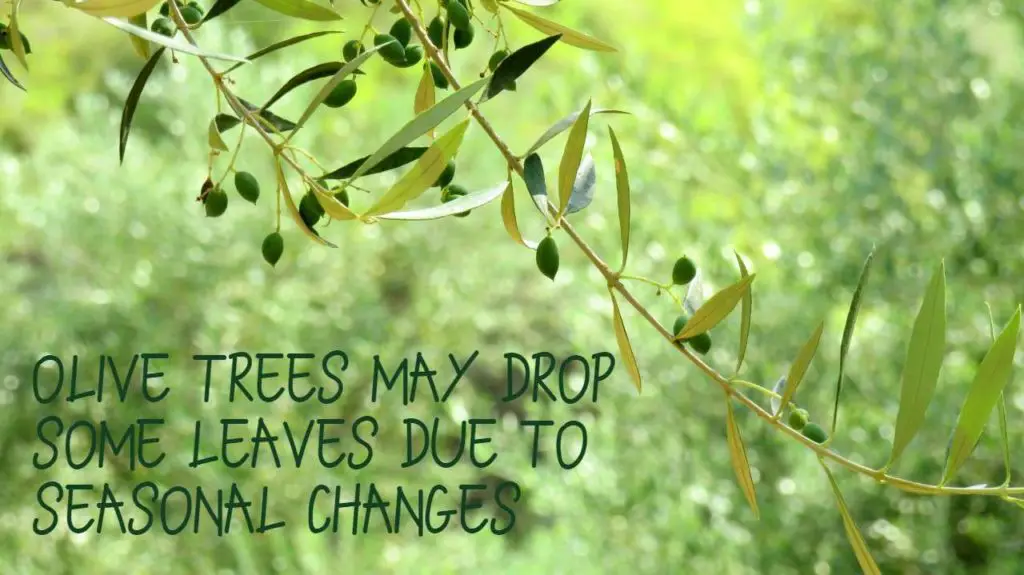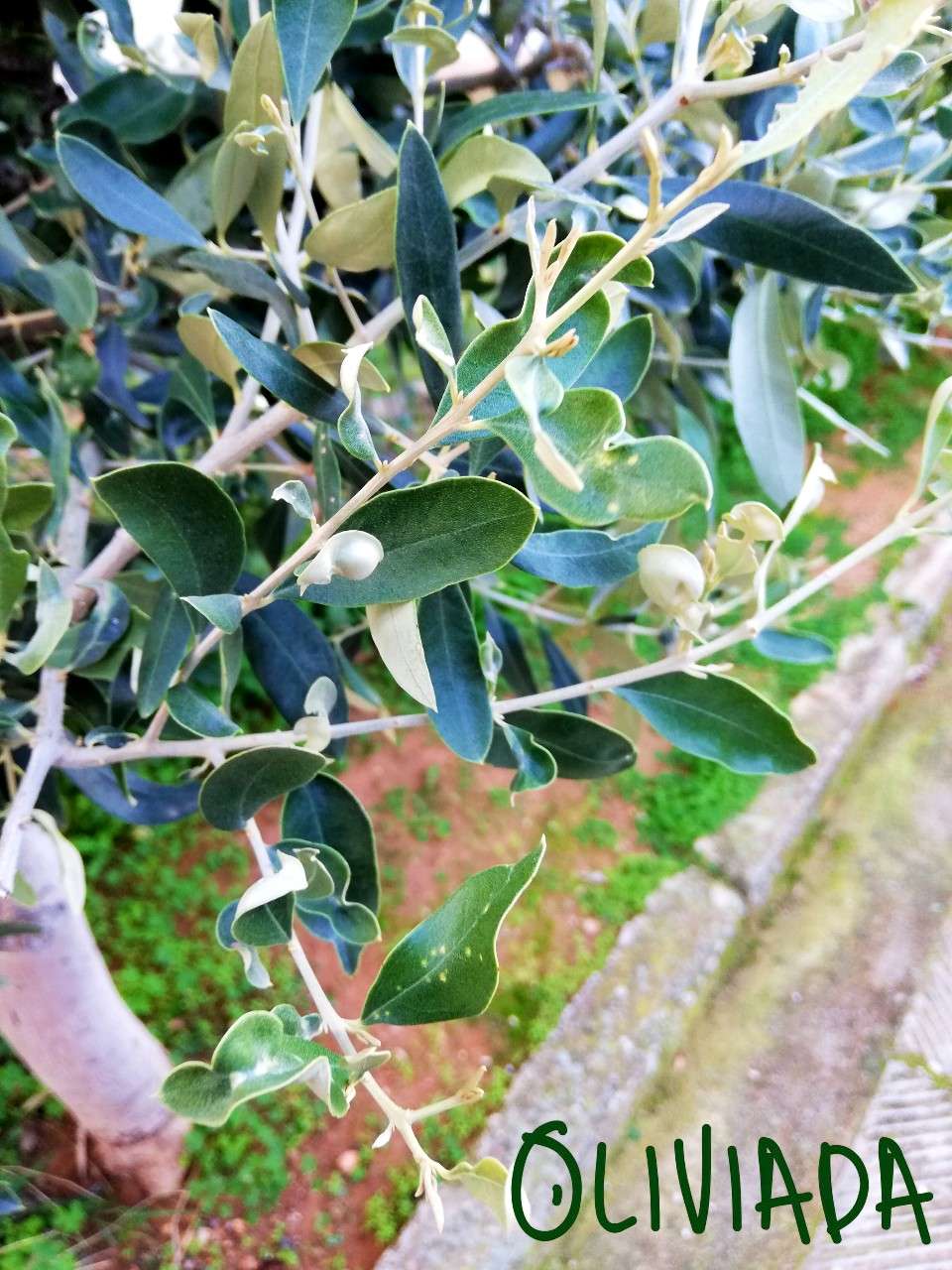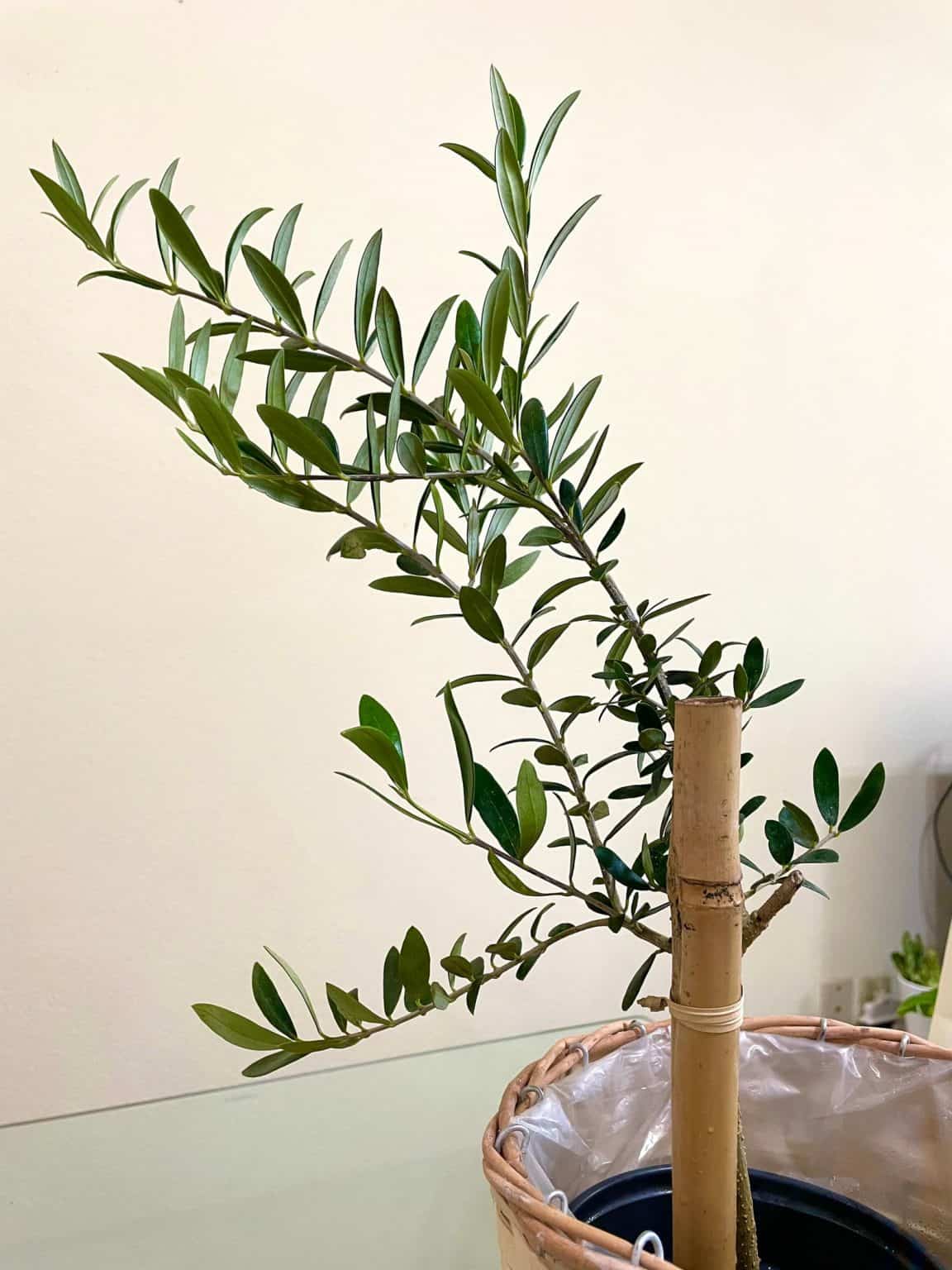Understanding the Life Cycle of Olive Trees
Olive trees, like all living organisms, go through a natural life cycle that includes growth, development, and shedding of leaves. As olive trees mature, they periodically shed their leaves as part of their natural growth process. This shedding can be a normal occurrence, but it can also be a sign of potential issues that need to be addressed. For instance, if the leaves are falling off in large quantities, it may indicate that the tree is under stress or experiencing nutrient deficiencies.
During the spring and summer months, olive trees typically produce new growth, including leaves, flowers, and fruit. As the seasons change and the weather cools, the trees prepare for dormancy by slowing down their growth and shedding their leaves. This process is a natural adaptation to conserve energy and protect the tree from harsh weather conditions.
However, if the leaves are falling off excessively, it may be a sign that the tree is experiencing problems. For example, if the leaves are turning yellow or dropping off in large quantities, it could be a sign of over-watering or root bound conditions. On the other hand, if the leaves are dropping off due to pests or diseases, it may be necessary to take action to prevent further damage.
It’s essential to monitor the health of your olive tree regularly to catch any potential issues before they become severe. By understanding the natural life cycle of olive trees and recognizing the signs of stress or disease, you can take proactive steps to prevent problems and ensure the long-term health and productivity of your tree.
Common Reasons for Olive Tree Leaf Drop
While the natural life cycle of olive trees includes shedding leaves, there are several common reasons why olive tree leaves may fall off excessively. Understanding these causes is crucial to addressing the issue and preventing further damage to the tree.
One of the most common reasons for olive tree leaf drop is over-watering. When the soil is consistently waterlogged, the roots of the tree can become oxygen-deprived, leading to root rot and leaf drop. On the other hand, under-watering can also cause leaf drop, as the tree may not be receiving enough moisture to sustain its growth.
Root bound is another common issue that can cause olive tree leaves to fall off. When the roots of the tree become constricted in the pot, it can prevent the tree from absorbing the necessary nutrients and water, leading to leaf drop. To address this issue, it may be necessary to transplant the tree into a larger pot or directly into the ground.
Nutrient deficiencies are also a common cause of olive tree leaf drop. Olive trees require a balanced diet of nutrients, including nitrogen, phosphorus, and potassium, to maintain healthy growth. A lack of these nutrients can cause leaves to turn yellow or drop off. Fertilizing the tree with a balanced fertilizer can help address this issue.
Pests and diseases can also cause olive tree leaves to fall off. Common pests that can infest olive trees include olive knot, root rot, and spider mites. These pests can cause damage to the leaves and branches of the tree, leading to leaf drop. Regular monitoring and management of pests and diseases can help prevent this issue.
Finally, environmental factors such as extreme temperatures, drought, and wind can also contribute to olive tree leaf drop. Olive trees prefer well-draining soil and full sun to partial shade. Exposure to extreme temperatures, drought, or wind can cause stress to the tree, leading to leaf drop. Providing protection from these environmental factors, such as using a windbreak or providing supplemental watering, can help prevent leaf drop.
How to Identify and Address Nutrient Deficiencies in Olive Trees
Nutrient deficiencies are a common cause of olive tree leaves falling off. Olive trees require a balanced diet of nutrients to maintain healthy growth, and a lack of these nutrients can cause leaves to turn yellow or drop off. Identifying and addressing nutrient deficiencies is crucial to preventing leaf drop and promoting healthy growth.
One of the most common signs of nutrient deficiency in olive trees is yellowing leaves. If the leaves are turning yellow or pale, it may be a sign that the tree is not receiving enough nitrogen, iron, or magnesium. Stunted growth is another sign of nutrient deficiency, as the tree may not be receiving enough nutrients to support healthy growth.
To address nutrient deficiencies, it’s essential to fertilize the tree with a balanced fertilizer. A fertilizer that is high in nitrogen, phosphorus, and potassium (NPK) can provide the necessary nutrients for healthy growth. Additionally, soil amendments such as compost or manure can help improve soil fertility and provide beneficial microbes to the tree.
It’s also important to note that over-fertilization can be detrimental to olive trees. Too much fertilizer can cause more harm than good, so it’s essential to follow the recommended application rates and avoid over-fertilizing. Regular soil testing can help determine the nutrient levels in the soil and ensure that the tree is receiving the necessary nutrients.
In addition to fertilization, pruning and repotting can also help address nutrient deficiencies. Pruning can help promote healthy growth by removing dead or diseased branches, while repotting can provide the tree with fresh soil and a larger pot to accommodate its growing roots.
By identifying and addressing nutrient deficiencies, olive tree owners can help prevent leaf drop and promote healthy growth. Regular maintenance, including fertilization, pruning, and repotting, can help ensure that the tree receives the necessary nutrients to thrive.
Pests and Diseases: Common Culprits Behind Olive Tree Leaf Drop
Pests and diseases are common culprits behind olive tree leaf drop. These unwanted visitors can cause significant damage to the tree, leading to leaf drop and reduced growth. Identifying and managing pests and diseases is crucial to preventing leaf drop and promoting healthy growth.
One of the most common pests that can infest olive trees is the olive knot. This pest causes small, swollen growths to form on the branches of the tree, which can lead to leaf drop and reduced growth. To manage olive knot, it’s essential to prune the affected branches and apply insecticidal soap or neem oil to the tree.
Root rot is another common disease that can cause olive tree leaf drop. This disease occurs when the roots of the tree become waterlogged, leading to root rot and leaf drop. To manage root rot, it’s essential to improve drainage and reduce watering. Fungicides can also be applied to the tree to help control the disease.
Spider mites are another common pest that can infest olive trees. These tiny pests feed on the sap of the tree, causing yellowing leaves and leaf drop. To manage spider mites, it’s essential to apply insecticidal soap or neem oil to the tree and increase watering to help flush out the pests.
Other common pests and diseases that can cause olive tree leaf drop include scale, mealybugs, and powdery mildew. Regular monitoring and management of these pests and diseases can help prevent leaf drop and promote healthy growth.
Preventing pests and diseases is key to maintaining healthy olive trees. Regular pruning, watering, and fertilization can help promote healthy growth and prevent pests and diseases from taking hold. Additionally, using organic pest control methods can help reduce the risk of chemical contamination and promote a healthy environment.
By identifying and managing pests and diseases, olive tree owners can help prevent leaf drop and promote healthy growth. Regular monitoring and maintenance can help ensure that the tree remains healthy and thrives for years to come.
Environmental Factors: How Weather and Climate Affect Olive Trees
Environmental factors, such as extreme temperatures, drought, and wind, can significantly impact the health of olive trees and contribute to leaf drop. Understanding how these factors affect olive trees can help you take steps to protect your tree and prevent leaf drop.
Extreme temperatures can cause stress to olive trees, leading to leaf drop. Prolonged exposure to temperatures above 90°F (32°C) or below 40°F (4°C) can cause damage to the tree’s leaves and branches. To protect your tree from extreme temperatures, provide shade during the hottest part of the day and use mulch to insulate the soil during cold snaps.
Drought is another environmental factor that can contribute to olive tree leaf drop. Olive trees prefer well-draining soil and consistent moisture, but they can tolerate some drought. However, prolonged drought can cause the tree to drop its leaves as a way to conserve water. To prevent drought-related leaf drop, water your tree regularly and provide supplemental irrigation during periods of drought.
Wind can also cause olive tree leaf drop by drying out the leaves and branches. To protect your tree from wind, provide a windbreak, such as a fence or a row of trees, to block the wind and reduce evapotranspiration.
Climate change can also impact olive tree health and contribute to leaf drop. Rising temperatures and changing precipitation patterns can alter the tree’s growth patterns and increase its susceptibility to pests and diseases. To adapt to climate change, consider using drought-tolerant olive tree varieties and implementing sustainable irrigation practices.
By understanding how environmental factors affect olive trees, you can take steps to protect your tree and prevent leaf drop. Regular maintenance, including watering, pruning, and fertilization, can help ensure that your tree remains healthy and thrives in a variety of environmental conditions.
How to Care for Your Olive Tree to Prevent Leaf Drop
Regular maintenance is essential to preventing olive tree leaf drop. By following a few simple care tips, you can help keep your tree healthy and thriving.
Watering is one of the most critical aspects of olive tree care. Olive trees prefer well-draining soil and consistent moisture, but they can tolerate some drought. However, over-watering can lead to root rot and leaf drop. To prevent this, water your tree regularly, but make sure the soil is not waterlogged.
Pruning is another essential aspect of olive tree care. Pruning helps to promote healthy growth, encourages fruiting, and removes dead or diseased branches. Prune your tree annually, removing any dead or damaged branches and shaping the tree to maintain its desired form.
Fertilization is also crucial for olive tree health. Olive trees require a balanced diet of nutrients to thrive, and fertilization helps to provide these nutrients. Use a balanced fertilizer, such as a 10-10-10 formula, and apply it according to the manufacturer’s instructions.
Soil care is also important for olive tree health. Olive trees prefer well-draining soil with a pH between 6.0 and 8.0. Test your soil regularly to ensure it is within this range, and amend it if necessary.
Finally, pest and disease management is essential for preventing olive tree leaf drop. Regularly inspect your tree for signs of pests or diseases, and take action promptly if you notice any issues.
By following these care tips, you can help prevent olive tree leaf drop and keep your tree healthy and thriving. Regular maintenance is key to preventing leaf drop and promoting healthy growth.
When to Worry: How to Determine if Your Olive Tree is Under Stress
While some leaf drop is normal, excessive leaf drop can be a sign of stress in olive trees. If you’re concerned about your tree’s health, it’s essential to monitor its condition and take action if necessary.
One of the most obvious signs of stress in olive trees is excessive leaf drop. If your tree is dropping more leaves than usual, it may be a sign that it’s under stress. Other signs of stress include yellowing leaves, reduced growth, and a decline in fruit production.
If you notice any of these signs, it’s essential to investigate the cause of the stress. Check the tree’s watering schedule, fertilization, and pruning to ensure that it’s receiving the necessary care. Also, inspect the tree for signs of pests or diseases, such as olive knot, root rot, or spider mites.
If you’re unable to determine the cause of the stress or if the issue persists, it may be necessary to seek professional help. A certified arborist or olive tree expert can assess the tree’s condition and provide guidance on how to address the issue.
Some common stressors that can affect olive trees include extreme temperatures, drought, and wind. If your tree is exposed to any of these stressors, it may be necessary to take steps to protect it. For example, you can provide shade for the tree during extreme heat, water it regularly during drought, or provide a windbreak to protect it from wind.
By monitoring your tree’s condition and taking action if necessary, you can help prevent stress and promote healthy growth. Remember, olive trees are resilient and can recover from stress with proper care and attention.
Reviving a Struggling Olive Tree: Tips and Tricks
If your olive tree is struggling, there are several steps you can take to revive it. With patience and persistence, you can nurse your tree back to health and prevent olive tree leaves from falling off.
Pruning is an essential step in reviving a struggling olive tree. Remove any dead or damaged branches, as these can be a sign of disease or pests. Prune the tree to maintain its shape and promote healthy growth.
Repotting can also help revive a struggling olive tree. If the tree is pot-bound, it may need to be transplanted into a larger pot with fresh soil. This will give the roots more room to grow and help the tree absorb more nutrients.
Providing supplemental care can also help revive a struggling olive tree. This can include fertilizing the tree with a balanced fertilizer, providing regular watering, and protecting the tree from extreme temperatures and wind.
It’s also essential to monitor the tree’s condition regularly and take action if you notice any signs of stress or disease. Regular monitoring can help you catch any issues early, and take steps to prevent them from becoming more serious.
Reviving a struggling olive tree requires patience and persistence. It may take time for the tree to recover, but with proper care and attention, it can thrive once again.
Remember, olive trees are resilient and can recover from stress with proper care and attention. By following these tips and tricks, you can help revive your struggling olive tree and prevent olive tree leaves from falling off.








